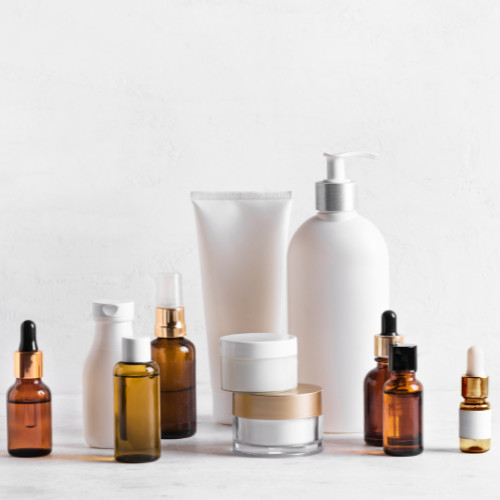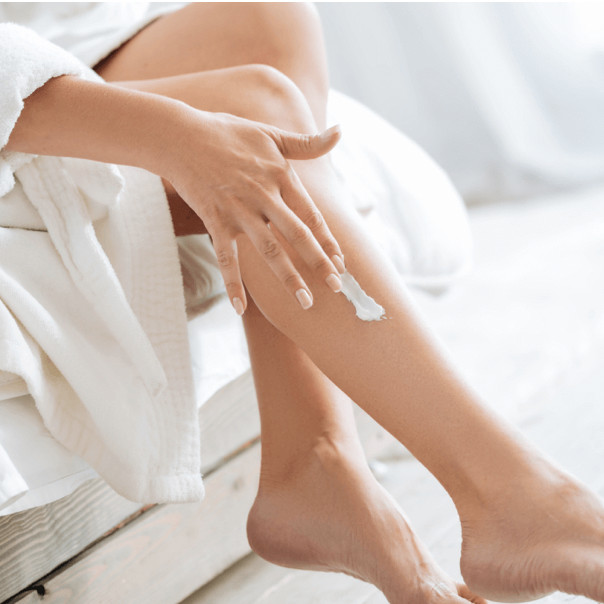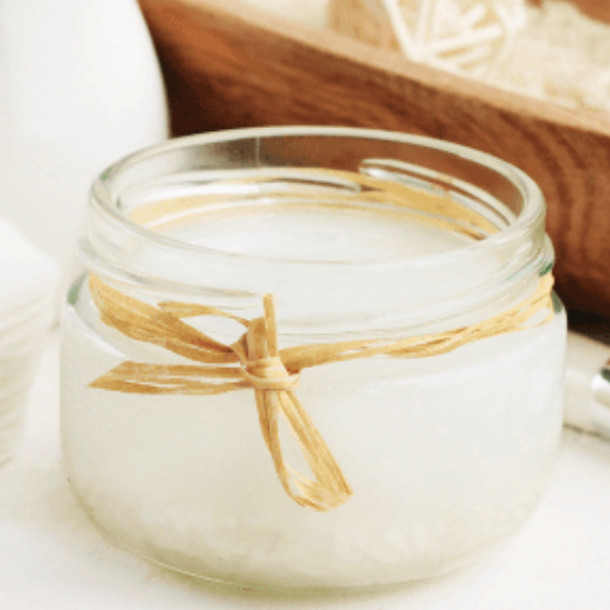
Taking care of your skin is more than just a beauty ritual; it's a form of self-care and a way to maintain the health of your largest organ. Establishing a daily skin care routine is key to maintaining healthy, glowing skin.
It can be daunting to know which product to use when and in what order. Here is a simple step-by-step routine to follow daily...
Step 1: Cleansing
The first step in any skin care routine is cleansing. Cleansing helps remove dirt, oil, and impurities from your skin, preparing it for the next steps in your routine. For most people, I recommend the double cleanse - cleansing your skin twice. The first cleanse removes surface oils and debris, while the second cleanse offers a deeper cleanse. The initial cleanse can be micellar water, a cream cleanser or a cleansing oil that emulsifies. The final cleanse can be a cleanser that is suited to your skin type, but nothing that will dry or strip skin of its precious natural oils (yep - even if you are oily).
Step 2: Toning
Toning is an optional but very beneficial step that helps balance your skin's pH levels and tightens pores. Apply a small amount of toner to a cotton pad and gently swipe it over your face and neck or spritz directly onto face with eyes closed. Look for a toner that suits your skin type and concerns, such as hydrating toners for dry skin or clarifying toners for oily skin.
Step 3: Serum
Serums are concentrated formulas that target specific skin concerns, such as wrinkles, dark spots, or hydration. After toning, while skin is still damp, apply a small amount of serum to your face and neck, focusing on areas that need extra attention. Gently massage the serum into your skin using upward strokes.
Step 4: Moisturizer
Moisturizing is essential for keeping your skin hydrated and nourished. Choose a moisturizer that matches your skin type—whether it's a lightweight lotion, a rich cream, or a gel formula. Apply moisturizer to your face and neck using gentle upward strokes.
Step 5: Eye Cream
The skin around your eyes is delicate and prone to signs of aging, such as fine lines and wrinkles. Use a pea-sized amount of eye cream and gently pat it around your eye area, avoiding direct contact with your eyes. Look for eye creams that address your specific concerns, such as puffiness, dark circles, or hydration.
Step 6: Sun Protection (daytime)
Sunscreen is a non-negotiable step in your daily skin care routine, even on cloudy days. You should wear facial sunscreen every day of your life for the rest of your life. Choose a broad-spectrum mineral sunscreen with an SPF of at least 30 and apply it generously to your face and any other exposed skin. Reapply sunscreen every two hours, or more frequently if you're sweating or swimming.
Bonus Steps
To level up your skin care routine, adding in these steps can help to
- Exfoliate 1-2 times a week to remove dying skin cells and reveal fresh, radiant skin.
- Use treatment masks targeted to your specific skin concerns.
By following these basic steps daily and customizing your routine with the right products, you can keep your skin healthy and glowing. Consistency is key.
Here's a daily routine cheat sheet to print out and keep in the bathroom until you get the steps down.
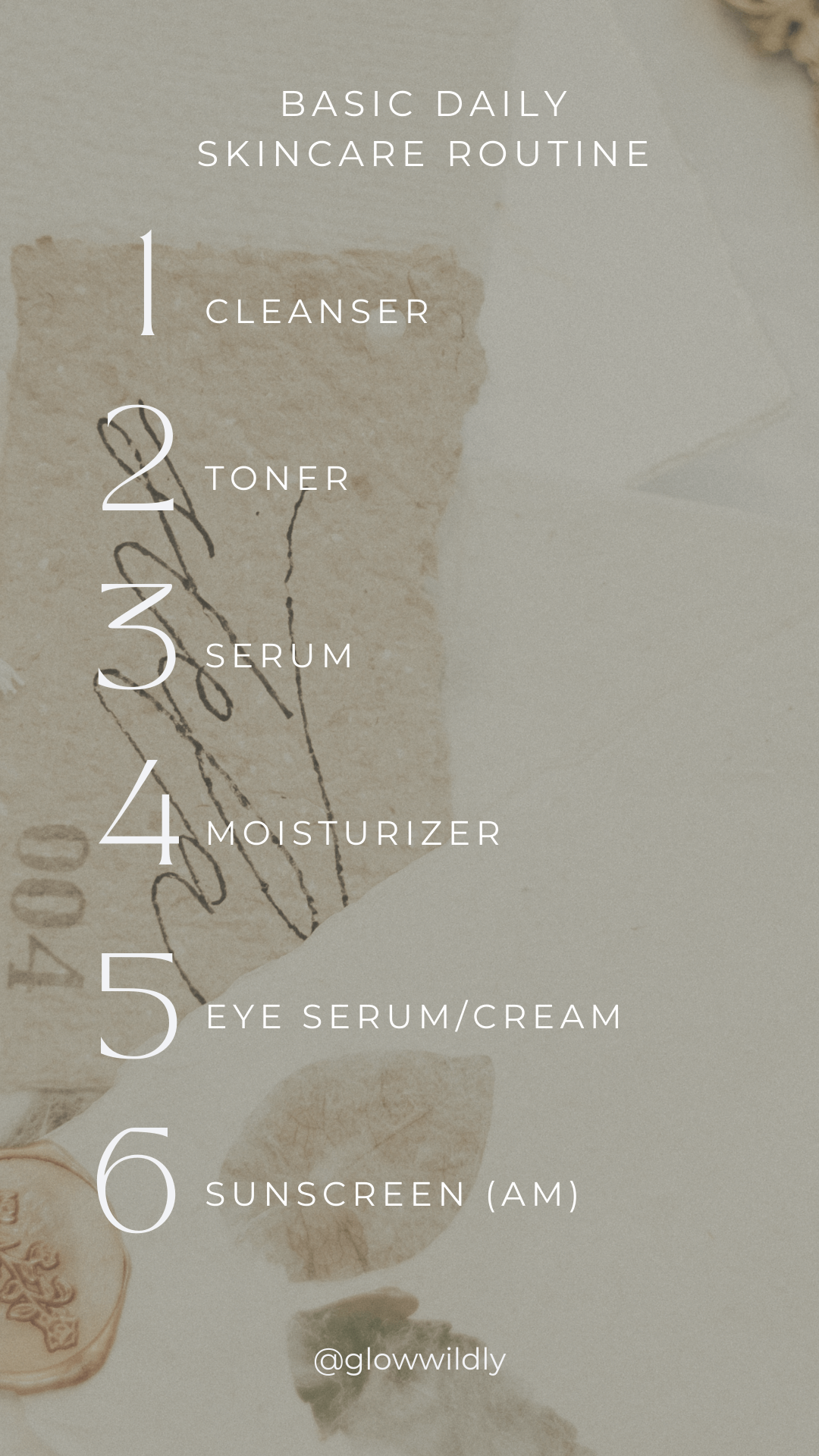
This post may contain affiliate links that support the creation of the content of this blog. If you use these links to buy something, I may earn a commission, at no additional cost to you. Thank you.
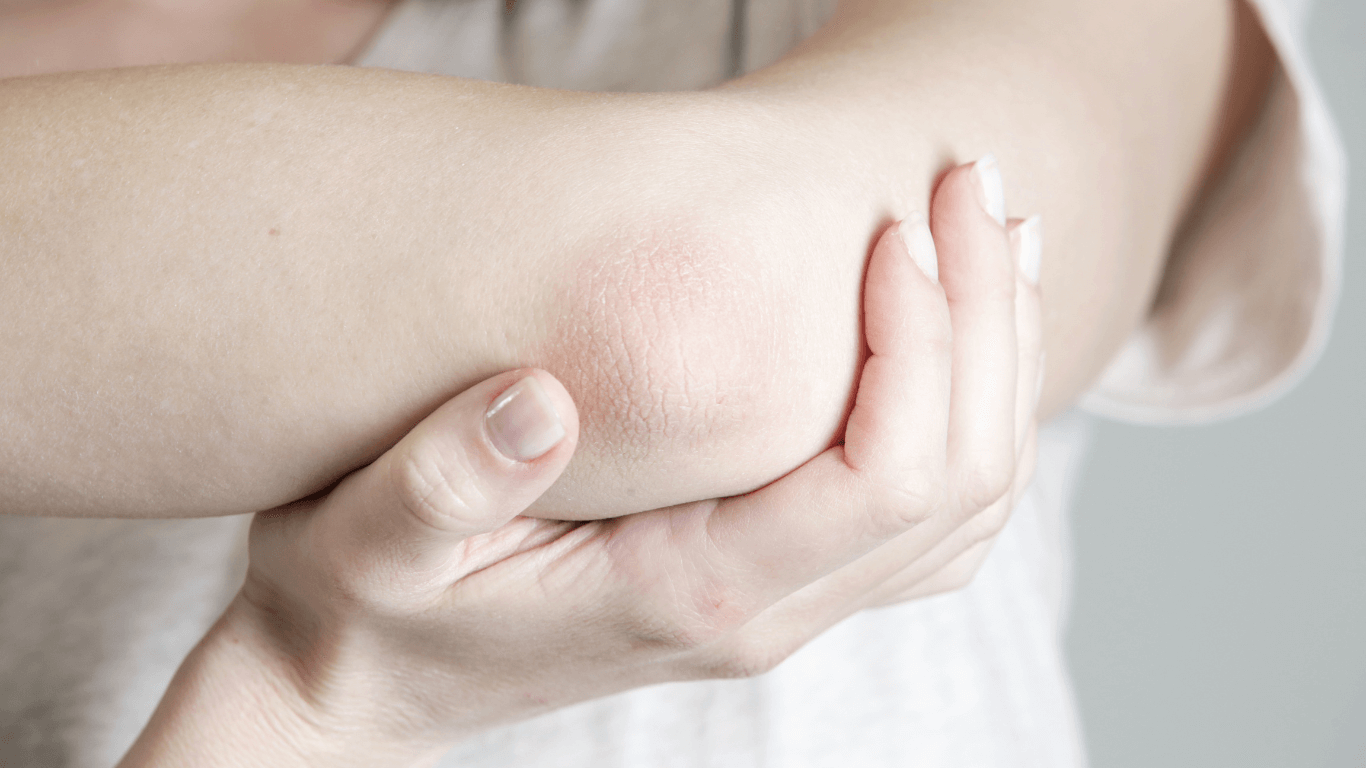
Winter is a beautiful season, but it can wreak havoc on your skin, leaving it dry, flaky, and uncomfortable. Cold air, low humidity, and indoor heating can strip your skin of its natural oils, leading to moisture loss and irritation. However, with the right skincare routine and products, you can keep your skin hydrated, supple, and glowing all winter long. In this guide, we'll explore how to care for dry skin during the winter months, focusing on both facial and body care.
Understanding Dry Skin
Dry skin, also known as xerosis, is a common skin condition characterized by a lack of moisture in the outermost layer of the skin. It can be caused by a variety of factors, including cold weather, low humidity, hot showers, harsh soaps, and aging. Dry skin is often accompanied by symptoms such as itching, redness, flaking, and tightness.

Facial Care for Dry Skin
Gentle Cleansing:
Start your skincare routine with a gentle, hydrating cleanser that won't strip your skin of its natural oils. Look for ingredients like hyaluronic acid, glycerin, and ceramides, which help to attract and retain moisture.
Exfoliation:
Exfoliating regularly can help to remove dead skin cells and promote cell turnover, allowing moisturizers to penetrate more deeply. However, avoid harsh exfoliants, as they can further dry out your skin and compromise its natural protective barrier. Opt for a gentle chemical exfoliant with enzymes or gentle acids like lactic and azaelic acids or a physical scrub with a creamy base and smooth, rounded exfoliating particles (jagged, rough particles can create micro-tears in skin, causing irritation).
Hydration:
After cleansing and exfoliating, apply a hydrating toner, then a serum or facial oil to replenish moisture and nourish your skin. Look for products containing hyaluronic acid, squalene, niacinamide, and vitamin E, which are known for their hydrating and soothing properties.
Moisturization:
The key to combating dry skin is to use a rich, emollient moisturizer that helps to lock in moisture and create a protective barrier on the skin. Choose a moisturizer with ingredients like shea butter, jojoba oil, or squalane, which are highly moisturizing and help to repair the skin's natural barrier.
Sun Protection:
Even in winter, it's important to protect your skin from the sun's harmful UV rays. Use a broad-spectrum sunscreen with an SPF of 30 or higher, and reapply every two hours when outdoors.
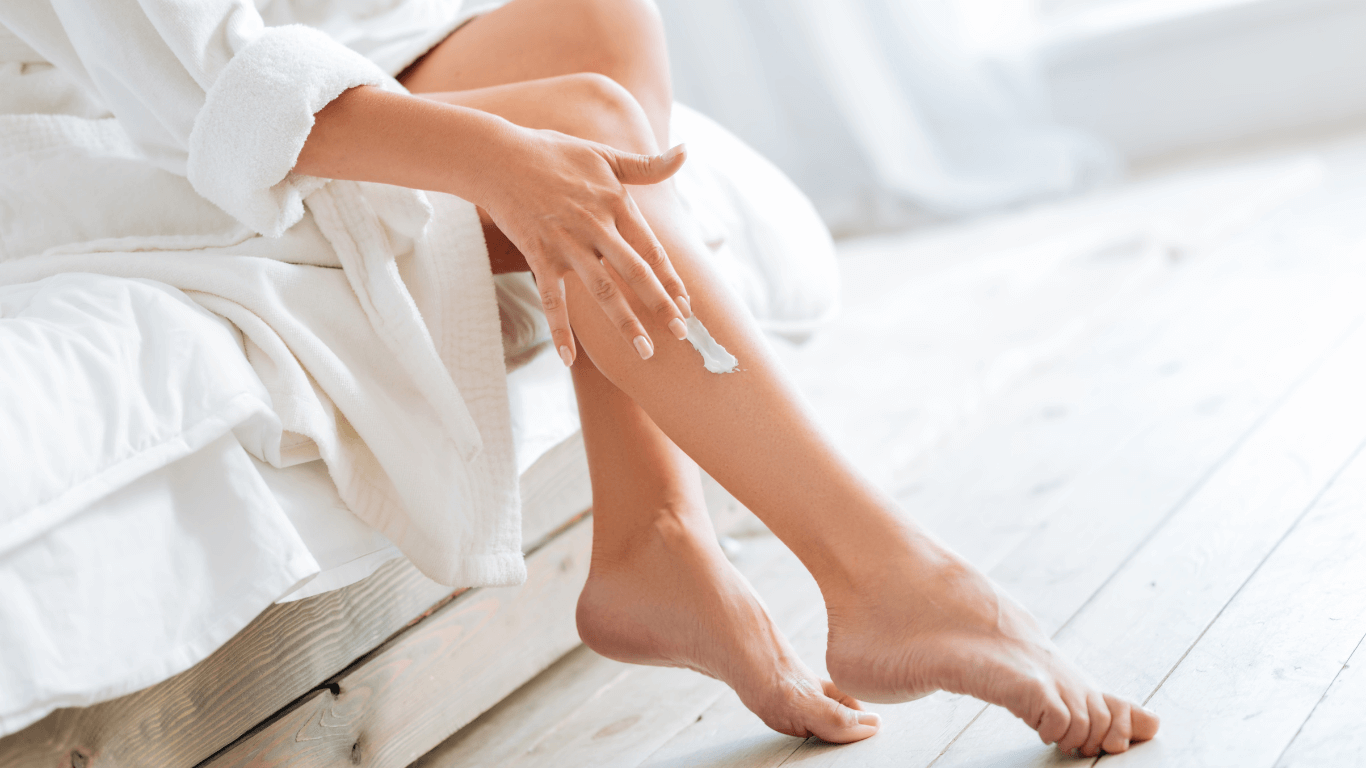
Body Care for Dry Skin
Hydrating Shower:
Avoid hot showers, as they can strip your skin of its natural oils. Instead, opt for warm water and a moisturizing body wash that helps to hydrate and nourish your skin.
Gentle Exfoliation:
Use a gentle body scrub once or twice a week to remove dead skin cells and improve the absorption of moisturizers. Avoid harsh scrubs, as they can further irritate dry skin.
Moisturizing Body Lotion:
After showering, apply a rich, creamy body lotion or body butter to damp skin to lock in moisture. Pay special attention to areas prone to dryness, such as elbows, knees, and heels. While it may be tempting to use a fragranced body product, fragrance can irritate skin, especially when it is dry and compromised. Opt for a fragrance-free product.
Layering Products
To maximize the benefits of your skincare products (for face and body), apply them from lightest to thickest consistency. Start with a serum or oil, followed by a richer moisturizer. You can even apply a few drops of facial oil to your fingertips and gently press it over your moisturizer for an additional layer of protection.
Additional Tips for Winter Skin Care
- Stay Hydrated: Drink plenty of water throughout the day to keep your skin hydrated from the inside out.
- Humidifier: Use a humidifier in your home - or even on your nightstand at night - to add moisture to the air and prevent dryness. I love this one.
- Protective Clothing: Wear hats, scarves, and gloves to protect your skin from cold winds and harsh weather.
- Avoid Irritants: Limit your exposure to harsh soaps, alcohol-based products, and fragrances, which can irritate dry skin.
Caring for dry skin in winter doesn't have to be complicated. By following a simple skincare routine that includes gentle cleansing, exfoliation, hydration, and moisturization, you can keep your skin healthy and hydrated all season long. Remember to layer your skincare products from lightest to thickest to seal in moisture and protect your skin from the elements. With the right care and attention, you can enjoy soft, supple skin throughout the winter months.
This post may contain affiliate links that support the creation of the content of this blog. If you use these links to buy something, I may earn a commission, at no additional cost to you. Thank you.
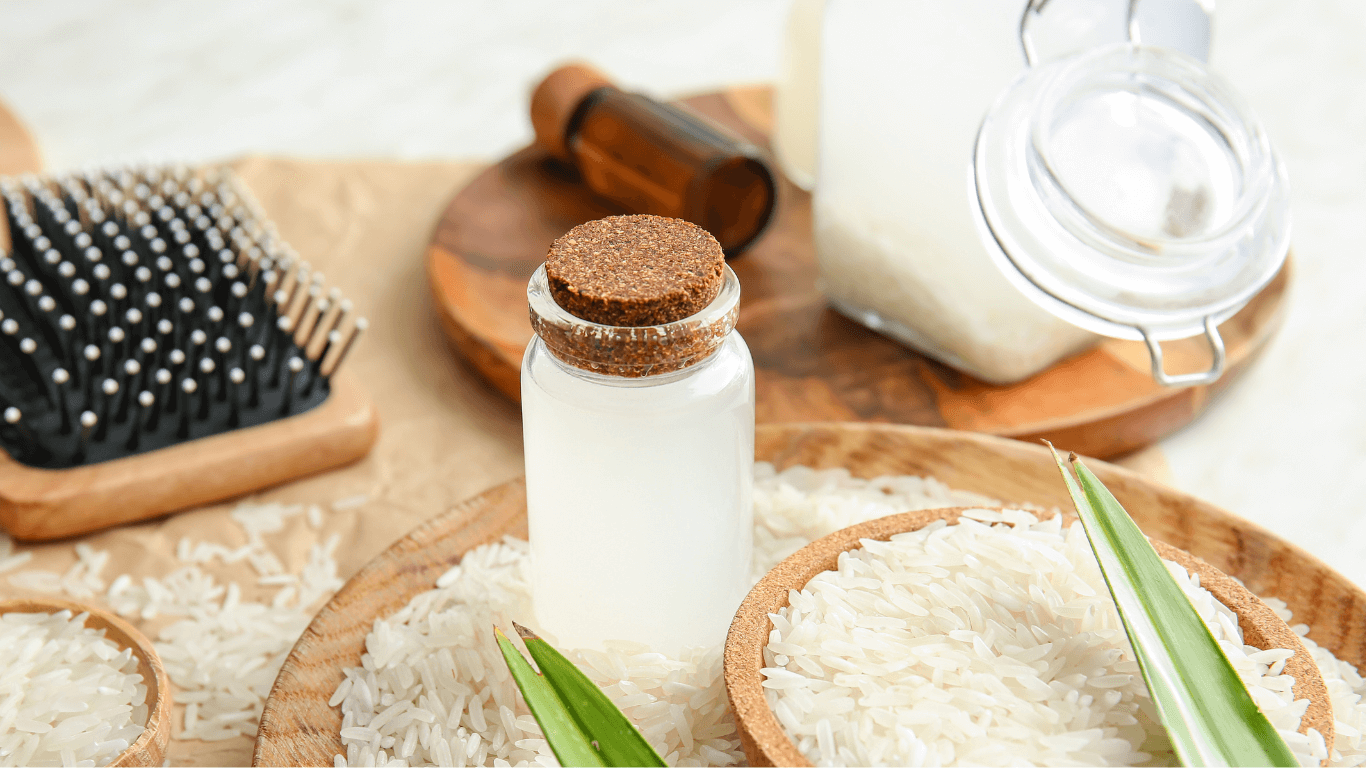
Rice water has been used in beauty rituals for centuries. This simple preparation is derived from soaking rice in water and holds the power to transform your hair and skin.
Why Rice Water for Hair and Skin?
Rice water is packed with vitamins, minerals, and antioxidants. These include vitamin E, minerals like magnesium and selenium, and amino acids – all of which contribute to healthier hair and skin. Rice water's skin-brightening properties can help even out skin tone and reduce dark spots. It also has anti-inflammatory properties that can calm irritated skin, making it suitable for sensitive skin types.
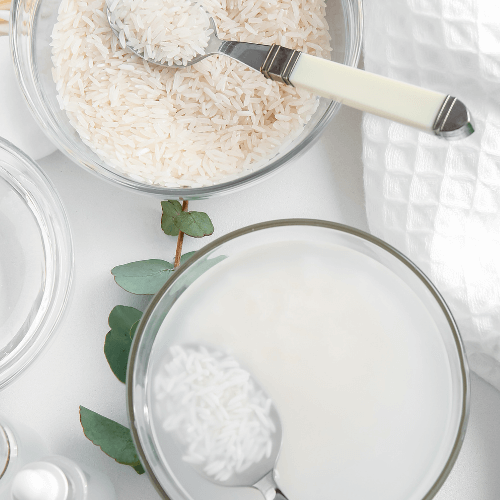 Making Rice Water: A Step-by-Step Guide
Making Rice Water: A Step-by-Step Guide1. Gather Your Ingredients
All you need to make rice water is dried rice and distilled water.. Opt for organic or whole-grain rice for maximum nutritional content.
2. Rinse the Rice
Begin by rinsing about 1/2 cup of rice thoroughly to remove any impurities. Use a very fine-mesh strainer for this process.
3. Soaking the Rice
Place the rinsed rice in a bowl and add 2-3 cups of distilled water. Allow it to soak for 15-30 minutes, depending on your preference. This soaking period allows the rice to release its beneficial nutrients into the water.
4. Straining the Rice Water
After soaking, strain the rice water into a clean spray bottle with a lid. It will look cloudy.
5. Fermentation (Optional):
For an extra boost, consider letting the rice water ferment at room temperature for 12 hours. Fermentation enhances the nutrient content and promotes the growth of beneficial bacteria.
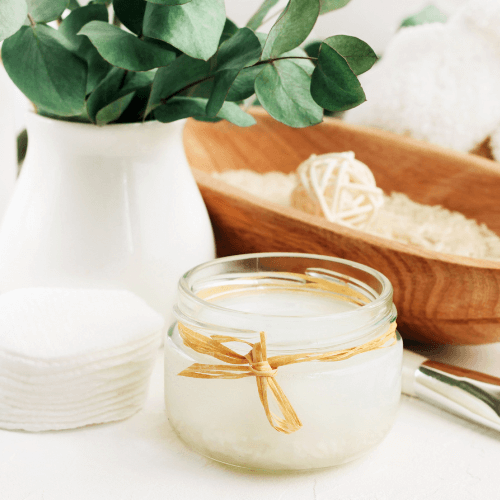
Precautions for Making and Using Rice Water
- Use distilled water to rinse and soak the rice to avoid impurities.
- Keep rice water refrigerated immediately after straining or after fermenting for 12 hours. Discard any unused rice water after 48 hours and make a new batch.
- For skin, mist face with rice water once daily or apply with a cotton round. You can rinse it off after 30-minutes or leave it on overnight for brightening skin.
- Before applying rice water to your skin, conduct a patch test to check for any adverse reactions.
This post may contain affiliate links that support the creation of the content of this blog. If you use these links to buy something, I may earn a commission, at no additional cost to you. Thank you.
 Hormonal shifts during menopause can lead to changes in skin texture, elasticity, breakouts (again?) and overall skin health. But, there are proactive steps you can take to ensure your skin remains radiant and healthy during this time of transition.
Hormonal shifts during menopause can lead to changes in skin texture, elasticity, breakouts (again?) and overall skin health. But, there are proactive steps you can take to ensure your skin remains radiant and healthy during this time of transition.
1. Stay Moist
Menopause and peri-menopause bring about hormonal changes, including a decrease in estrogen levels. One significant effect of this hormonal shift is a reduction in oil production by the skin's sebaceous glands. This decrease in oil can lead to dryness, a loss of elasticity, and hella increased sensitivity. To combat these effects, it's essential to adapt your skincare routine. Incorporate hydrating and nourishing products such as rich moisturizers and serums containing hyaluronic acid and squalene to help retain moisture.
2. Prioritize Sun Protection:
Sun protection is a non-negotiable step in any skincare routine, but it becomes even more crucial during menopause. Hormonal changes can make your skin more sensitive to UV damage, and prolonged sun exposure can lead to age spots and worsen existing skin concerns. Use a broad-spectrum sunscreen with at least SPF 30 daily, even on cloudy days. Don't forget to protect your neck, chest, and hands, as these areas often show sun damage more quickly.
3. Adopt a Gentle Cleansing Routine:
Menopausal skin may become more sensitive, so it's essential to use a gentle cleanser that won't strip your skin of its natural oils. Look for a mild, hydrating cleanser that can effectively remove dirt and makeup without causing irritation. Consider double cleansing if you wear makeup or sunscreen regularly to ensure your skin is thoroughly clean. Try using micellar water to remove makeup and a gentle cream or low-foaming cleanser to cleanse.
4. Include Antioxidants in Your Skincare:
Antioxidants play a vital role in combating free radicals, which can accelerate the aging process. Incorporate skincare products containing antioxidants like vitamin C, vitamin E, and green tea extract into your routine. These ingredients can help protect your skin from environmental damage and promote a healthy appearance.
5. Focus on Boosting Collagen
Peptides and retinaldehyde are powerful allies in supporting collagen production for menopausal skin. Peptides are amino acid compounds that can signal the skin to produce more collagen, helping to improve skin elasticity and firmness. Retinaldehyde, a gentle form of retinoid (Vitamin A), stimulates collagen synthesis and promotes skin renewal. Together, they work synergistically to combat the collagen loss associated with menopause, helping to reduce the appearance of fine lines and wrinkles, and restoring a more youthful complexion. Incorporating skincare products containing these ingredients can be an effective strategy to boost collagen production and maintain skin vitality.
6. Consult a Pro
If you're experiencing specific skin concerns during menopause, such as mild to moderate dryness, adult acne, or pigmentation issues, don't hesitate to consult a professional. Lean on me to help you to find the right skin care for your unique skin's needs, as well as suggestions for treatments to resurface skin, bring back vibrance, decrease hyperpigmentation and more.
For more chronic or severe concerns, as well as regular skin cancer checks, it is always a good idea to consult a dermatologist.
By following these skincare tips and being mindful of your skin's changing needs, you can embrace this phase of life with radiant, healthy, and beautiful skin. Remember, self-care and self-love are key elements in this journey, so cherish yourself and celebrate the skin you're in.
This post may contain affiliate links that support the creation of the content of this blog. If you use these links to buy something, I may earn a commission, at no additional cost to you. Thank you.
 Stress is a total jerk face.
Stress is a total jerk face.Like we all learned in middle school health class, we need a certain amount of stress to keep us motivated, moving through life and doing the thing. But, severe or chronic stress turns us into an opossum.
Quite literally, when the body is met with high levels of stress or stress that seemingly has no end, the nervous system goes into fight-or-flight - and can sometimes even get stuck there and just shut the body down.
I experienced this first-hand a few times in my life, the most recent being this past year, when, one day, my digestive system decided to peace out. Like, for days. It did nothing. I couldn't eat, I struggled to stay awake and even do simple tasks. I could barely form a thought or remember a thing. I was not doing well managing the list of stressors in my life and how fast they were coming at me.
I was navigating a brand new job, new home, new town, being a newly single mom without sufficient resources, a shift in my support network and a close family member with chronic and life-threatening health issues. I didn't have time to take a breath.
Because I wouldn't/couldn't slow down and prioritize my health, my body did it for me.
Enter, adaptogens. They were one of my saving graces - along with other support modalities - to get my body back on track.
What Are Adaptogens?
Adaptogens are a class of herbs and mushrooms that have been used for centuries in traditional medicine systems like Ayurveda and Traditional Chinese Medicine (TCM). What sets them apart is their unique ability to help our bodies adapt to various stressors, whether they are physical, emotional, or environmental. These stressors could be anything from a demanding work schedule to the challenges of this modern world.
How Do Adaptogens Work?
Adaptogens work by interacting with our body's stress response system, which includes the hypothalamic-pituitary-adrenal (HPA) axis and the sympathetic nervous system. These herbs and mushrooms help regulate cortisol levels, a hormone produced in response to stress, and modulate our body's overall stress response. They don't eliminate stress but rather enable the body to handle it more efficiently, rather than like an opossum.
Common Adaptogenic Herbs and Mushrooms:
Ashwagandha: This herb is a staple in Ayurvedic medicine. It's known for its potential to reduce stress and anxiety, improve sleep quality, and support cognitive function.
Rhodiola Rosea: Hailing from the cold regions of Europe and Asia, Rhodiola is believed to enhance energy levels, focus, and physical endurance. It's often used by those looking to combat mental fatigue.
Reishi Mushroom: Reishi is considered the "queen of mushrooms." It's revered for its potential to boost the immune system, improve sleep, and promote relaxation.
Lion's Mane Mushroom: Known for its potential cognitive benefits, Lion's Mane is believed to support memory, focus, and overall brain health.
Holy Basil (Tulsi): In Ayurveda, Holy Basil is revered as an "elixir of life." It's used to reduce stress, promote mental clarity, and support respiratory health. This is my favorite adaptogen - it resonates with my body like peas and carrots.
Schisandra Berry: Used in TCM, Schisandra is thought to enhance endurance, improve mental performance, and support liver health.
My trusted source for purchasing herbs, mushrooms and tinctures is Mountain Rose Herbs, but you can also usually find them at your local natural foods store.
Exploring Adaptogens
Incorporating adaptogens into your routine isn't a one-size-fits-all approach. It's about finding the herbs or mushrooms that resonate with your body and lifestyle. Here's how you can start:
Learn & Explore: Learn about and explore different adaptogens and their potential benefits. If you're on medication or have health concerns, be sure to check with your health care professional before using them. Try adaptogens one at a time as a tincture, infusion or a decoction.
Start Slowly: Incorporate one adaptogen at a time. Begin with a small amount and observe how your body responds. Try them in different forms, also - as a tincture, infusion or a decoction (if appropriate). Make notes of how each one
Consistency Matters: Adaptogens often have cumulative effects. Consistent, long-term use may yield better results.
Integrate Mindfulness: Alongside adaptogens, practice mindfulness techniques like meditation, deep breathing, walking and yoga to level up the stress management.
Prioritize Self-Care: Adaptogens work best when combined with a healthy lifestyle. Ensure you're getting adequate sleep, a nourishing diet, and regular physical activity.
The world asks a lot of us. Hustle culture is alive and flourishing, on top of just regular life stuff. And we are given the mixed message of making time for self-care, while also expecting to go, go, go and do, do, do.
Let's all pinkie promise to slow TF down, prioritize ourselves and give hustle culture the finger. Adaptogenic herbs and mushrooms offer a gentle and natural way to support your journey towards balance, resilience, and overall well-being. Stress will always be there, but adaptogens are a great ally to help us face it with more strength and calm.
This post may contain affiliate links that support the creation of the content of this blog. If you use these links to buy something, I may earn a commission, at no additional cost to you. Thank you.



